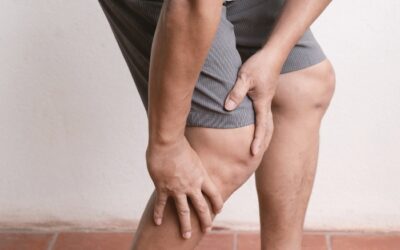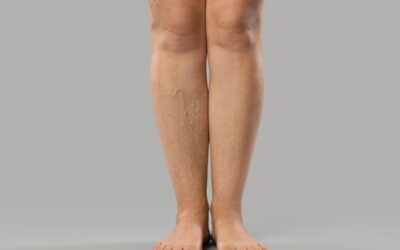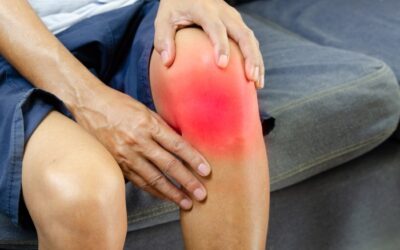Have you ever ended the day with aching and heavy legs, making even simple tasks like walking or climbing stairs uncomfortable? While occasional leg fatigue is normal, persistent heaviness and pain can be an early symptom of varicose veins. Varicose veins are swollen, twisted veins that usually appear on the legs and can affect circulation and vein valve function.
Understanding the causes, risk factors, and ways to manage aching and heavy legs is important for maintaining vein health and preventing complications. This article explores why these symptoms occur, what signs to watch for, and practical strategies to relieve discomfort.
Table of Contents
- What Are Varicose Veins?
- Why Aching and Heavy Legs Occur
- Risk Factors for Varicose Vein Symptoms
- Symptoms to Watch For
- How Varicose Veins Are Diagnosed
- Ways to Manage & Relieve Aching and Heavy Legs
- When to Consult a Vein Specialist
- Final Thoughts
1. What Are Varicose Veins?
Varicose veins are swollen, twisted veins most commonly found in the legs. They occur when the valves inside the veins fail to work properly, causing blood to pool and increasing pressure within the veins. This dysfunction can lead to discomfort, visible bulging veins, and a sensation of heaviness in the legs.
In addition to being a cosmetic concern, varicose veins can affect overall circulation in the lower extremities. When blood flow is impaired, the legs may feel fatigued, achy, or heavy, especially after prolonged standing or sitting. Understanding this underlying cause helps explain why some people develop persistent leg discomfort.
2. Why Aching and Heavy Legs Occur
Aching and heavy legs often result from poor blood flow and vein valve failure. Chronic venous insufficiency, a condition where vein valves do not function properly, causes blood to pool in the lower legs, leading to increased pressure, swelling, and pain. Venous reflux, or backward blood flow, can also contribute to discomfort and fatigue.
Symptoms tend to worsen after long periods of standing or sitting, as the veins have to work harder to return blood to the heart. This is why many people notice increased heaviness and aching in the evening. Other contributing factors, such as obesity, hormonal changes, or a sedentary lifestyle, can amplify these sensations.
3. Risk Factors for Varicose Vein Symptoms
Several factors can increase your risk of developing aching and heavy legs from varicose veins. As you age, your vein valves naturally weaken, making you more susceptible. Genetics and family history also play a role, since varicose veins often run in families. Women face a higher risk due to hormonal changes during pregnancy, menopause, or while taking birth control, which can weaken vein walls. Carrying excess weight or being obese adds pressure on leg veins, and a sedentary lifestyle—or jobs that require long periods of standing or sitting—can slow blood flow. Knowing these risk factors allows you to take preventive steps and recognize symptoms early, helping you maintain healthier legs.
4. Symptoms to Watch For
Along with aching and heaviness, varicose veins can cause a variety of other symptoms:
- Aching or throbbing sensations in the legs
- Heaviness or fatigue in the lower extremities
- Swelling in the ankles or calves
- Visible bulging, twisted veins
- Tingling, burning, or itching sensations
- Skin changes, including discoloration, dryness, or ulcers in severe cases
These symptoms often worsen toward the end of the day or after prolonged standing or sitting. Elevating the legs can provide temporary relief and reduce swelling. Paying attention to these symptoms can help determine whether a vein specialist or medical evaluation is necessary.
5. How Varicose Veins Are Diagnosed
If aching and heavy legs persist, a vein specialist will perform a thorough evaluation. They begin by reviewing your medical history and conducting a physical examination to understand your symptoms, lifestyle, and any relevant risk factors.
The specialist often uses diagnostic tests, such as Doppler or duplex ultrasound, to check vein valve function and blood flow in your legs. If needed, they may order additional tests to rule out circulation, nerve, or muscle issues. Getting an early diagnosis helps prevent the condition from worsening, relieves symptoms, and reduces the risk of complications such as skin ulcers or advanced vein problems.
6. Ways to Manage & Relieve Aching and Heavy Legs
Managing aching and heavy legs often requires a combination of lifestyle changes and medical treatments. Regular physical activity, including walking, stretching, and leg exercises, improves circulation and strengthens the muscles supporting vein function. Avoiding prolonged sitting or standing and taking breaks to move helps reduce blood pooling in the legs. Elevating the legs when resting can also alleviate pressure and swelling.
Compression therapy, such as wearing compression stockings, supports vein function and enhances circulation. Proper hydration, a balanced diet, and maintaining a healthy weight further promote leg and vein health. For severe varicose veins, minimally invasive procedures like endovenous ablation or sclerotherapy may be recommended to restore proper blood flow and relieve symptoms.
7. When to Consult a Vein Specialist
It’s important to consult a vein specialist if aching and heavy legs persist. Symptoms that warrant evaluation include pain, swelling, visible varicose veins, skin changes, or reduced mobility. Seeking professional guidance from Premier Vein & Vascular Center ensures a thorough assessment and access to treatment options tailored to your needs. Early intervention can prevent complications, relieve discomfort, and improve quality of life.
8. Final Thoughts
Aching and heavy legs are often early indicators of varicose veins. Recognizing the symptoms, addressing risk factors, and implementing lifestyle adjustments can significantly improve leg comfort and circulation. Professional evaluation and treatment are essential to manage vein health effectively and prevent long-term complications.
If you experience aching and heavy legs, contact Premier Vein & Vascular Center today for a comprehensive evaluation. Our expert team can assess your vein health, recommend appropriate treatments, and help you regain comfort, mobility, and confidence in your legs.
This article is for informational purposes only and does not constitute medical advice. Please consult a qualified vein specialist at Premier Vein & Vascular Center for personalized evaluation and treatment.






